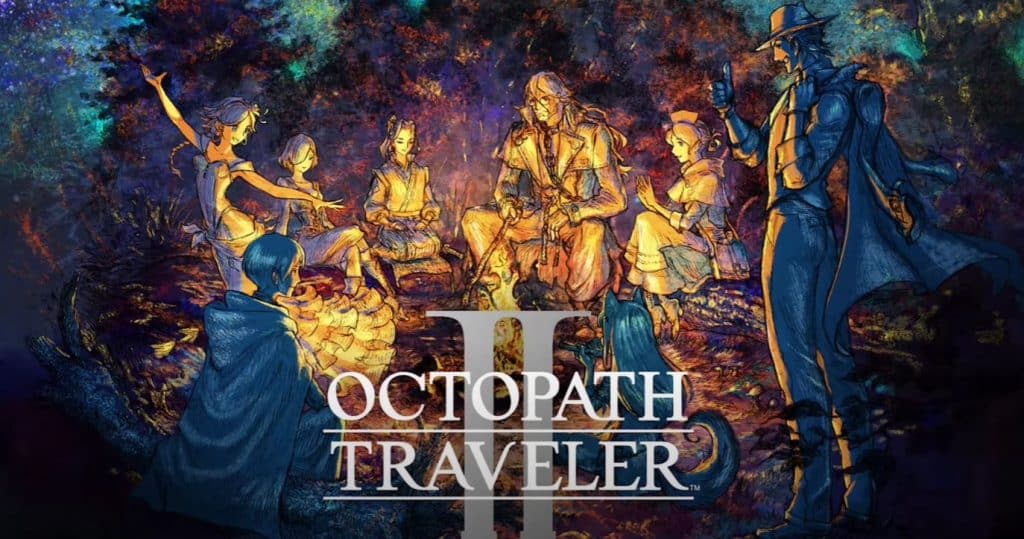Octopath Traveler 2, developed by Square Enix, emerges as a sequel that wears its heart on its sleeve. Right from the start, it becomes evident that this game is on a mission to capture the essence of a golden era in gaming. Building upon the success of its predecessor, it retains the beloved pixel-art aesthetic and turn-based combat system while endeavoring to introduce fresh elements to the mix.
Octopath Traveler 2, much like its predecessor, follows the journey of eight distinct characters, each with their own unique backgrounds, personalities, and motivations. This diversity adds depth to the game’s world and allows players to connect with characters who can resonate with them personally. Players select one of these characters as their protagonist and follow their individual story arc to embark on a quest to fulfill their unique goals. This character-driven narrative approach allows for deep exploration of each character’s past, struggles, and growth.
The game’s genre is firmly rooted in the JRPG tradition, featuring turn-based battles and an expansive world to explore. The ultimate objective? To immerse players in a nostalgic experience reminiscent of ’90s classics while offering a taste of something new.
Octopath Traveler 2 offers a level of nonlinearity in its storytelling, as players can choose the order in which they tackle the characters’ chapters. This freedom adds replayability and a sense of exploration as players craft their own narrative paths. Some character storylines in Octopath Traveler are emotionally resonant and thought-provoking. These stories touch on themes such as sacrifice, redemption, identity, and the consequences of one’s actions. These moments can be pretty powerful and memorable.
Though some character stories are engaging and relatable, others fall short, treading familiar ground from the first installment. The characters often feel like separate entities rather than a cohesive party, which may disappoint players seeking a more tightly woven narrative. The lack of a coherent narrative thread tying these individual stories together is evident, and it occasionally feels as though the characters and their development are neglected in favor of revisiting well-worn JRPG tropes.
Octopath Traveler lacks a central overarching plot that ties all eight characters together. This absence of a unifying narrative can leave players longing for a more epic and cohesive storyline that brings all the characters’ journeys together in a meaningful way. The game’s episodic structure, where players complete the same sequence of story chapters for each character, can become repetitive. This repetitiveness can make it feel like you’re playing variations of the same story multiple times. However, there are moments of brilliance in some character arcs that manage to shine through the storytelling’s unevenness.
Octopath Traveler 2’s gameplay largely sticks to the formula of its predecessor. While it introduces a few new mechanics like Latent Powers and the ability for characters to acquire a second job, the core gameplay remains essentially unchanged. Turn-based combat is a highlight, focusing on exploiting enemy weaknesses and managing Battle Points (BPs) to execute powerful moves. Boss battles are particularly well-crafted, offering a satisfying challenge.
However, the game also relies heavily on recycling elements from the first installment, which may disappoint returning players looking for more innovation. The open-ended structure, allowing players to choose their path, remains intact, but it comes at the expense of a cohesive party dynamic, as characters often feel disconnected from one another.
One of the standout features of Octopath Traveler 2 is its unique visual style, which combined 2D pixel art with modern 3D environments. This “HD-2D” style was designed to harken back to the classic RPGs of the 16-bit era while providing a fresh and modern look. Octopath Traveler 2 excels in this presentation. The pixel-art 3D dioramas capture the essence of ’90s JRPGs while offering a visual feast for modern eyes. The landscapes, towns, and characters are beautifully rendered, evoking a sense of nostalgia with a fresh twist.
The game’s music, still composed by Yasunori Nishiki, deserves praise for its evocative and memorable melodies, adding to the game’s nostalgic atmosphere. The music stands out, delivering haunting melodies and rousing battle anthems that transport players back to the era of classic SNES RPGs.
Octopath Traveler 2 is a sequel that pays heartfelt homage to the ’90s JRPGs cherished by many gamers. It successfully recreates the visual and auditory magic of that era while introducing some new gameplay elements. However, it also relies heavily on familiar tropes and recycles mechanics, which may disappoint those seeking a more innovative experience. The storytelling is a mixed bag, with some compelling character arcs overshadowed by the lack of a cohesive narrative thread. Nevertheless, for fans of classic JRPGs and those yearning for a nostalgic trip down memory lane, Octopath Traveler 2 offers a familiar, if somewhat conservative, journey into a beloved gaming era. With its strengths and weaknesses, it presents an opportunity for players to embark on a personal journey of exploration and nostalgia, forging their unique path through a world of pixelated wonder.










